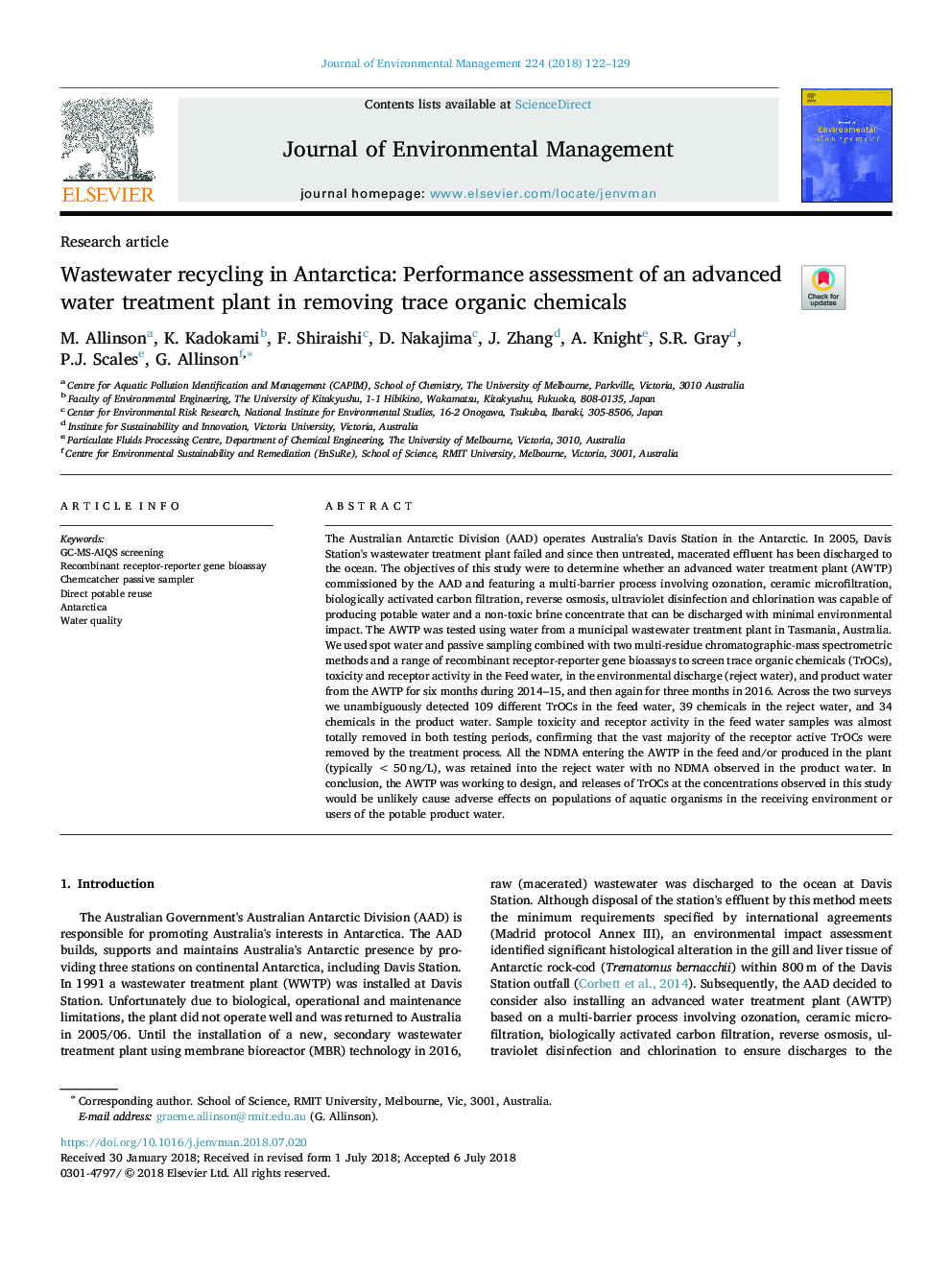| Article ID | Journal | Published Year | Pages | File Type |
|---|---|---|---|---|
| 7475559 | Journal of Environmental Management | 2018 | 8 Pages |
Abstract
The Australian Antarctic Division (AAD) operates Australia's Davis Station in the Antarctic. In 2005, Davis Station's wastewater treatment plant failed and since then untreated, macerated effluent has been discharged to the ocean. The objectives of this study were to determine whether an advanced water treatment plant (AWTP) commissioned by the AAD and featuring a multi-barrier process involving ozonation, ceramic microfiltration, biologically activated carbon filtration, reverse osmosis, ultraviolet disinfection and chlorination was capable of producing potable water and a non-toxic brine concentrate that can be discharged with minimal environmental impact. The AWTP was tested using water from a municipal wastewater treatment plant in Tasmania, Australia. We used spot water and passive sampling combined with two multi-residue chromatographic-mass spectrometric methods and a range of recombinant receptor-reporter gene bioassays to screen trace organic chemicals (TrOCs), toxicity and receptor activity in the Feed water, in the environmental discharge (reject water), and product water from the AWTP for six months during 2014-15, and then again for three months in 2016. Across the two surveys we unambiguously detected 109 different TrOCs in the feed water, 39 chemicals in the reject water, and 34 chemicals in the product water. Sample toxicity and receptor activity in the feed water samples was almost totally removed in both testing periods, confirming that the vast majority of the receptor active TrOCs were removed by the treatment process. All the NDMA entering the AWTP in the feed and/or produced in the plant (typicallyâ¯<â¯50â¯ng/L), was retained into the reject water with no NDMA observed in the product water. In conclusion, the AWTP was working to design, and releases of TrOCs at the concentrations observed in this study would be unlikely cause adverse effects on populations of aquatic organisms in the receiving environment or users of the potable product water.
Related Topics
Physical Sciences and Engineering
Energy
Renewable Energy, Sustainability and the Environment
Authors
M. Allinson, K. Kadokami, F. Shiraishi, D. Nakajima, J. Zhang, A. Knight, S.R. Gray, P.J. Scales, G. Allinson,
